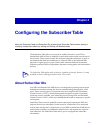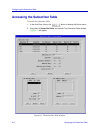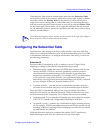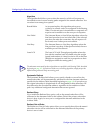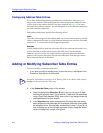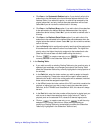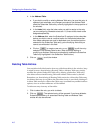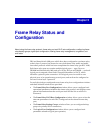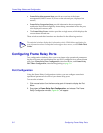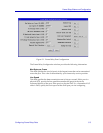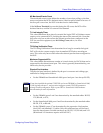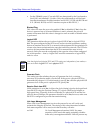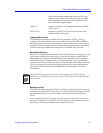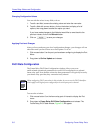
5-1
Chapter 5
Frame Relay Status and
Configuration
About using the frame relay protocol; frame relay port and DLCI rate configuration; configuring frame
relay backup groups; logical port configuration; viewing frame relay management, congestion, and
error stats
FRX and SmartSwitch 1800 ports which have been conÞgured to use frame relay
as their layer 2 protocol can be used to carry both frame relay trafÞc and trafÞc
from other protocols which has been encapsulated in frame relay (per RFC 1490).
Each frame relay port can contain multiple logical ports Ñ up to 56 on an
FRX4000 and SmartSwitch 1800, and up to 56 per RLP on an FRX6000 Ñ and each
logical port is assigned a Data Link Connection IdentiÞer (or DLCI), which
identiÞes a point-to-point connection. All 56 logical ports can reside on one
physical port, or be spread among several ports, and each can be conÞgured to
run one or more layer 3 protocols.
For each physical port conÞgured to run frame relay, four conÞguration windows
and three statistical windows are provided:
¥ The Frame Relay Port ConÞguration window allows you to conÞgure basic
operational parameters related to the frame relay protocol, and displays some
general information about the serial port itself and the line to which it is
connected;
¥ The Frame Relay DLCI Rate ConÞguration window allows you to select the
data rate parameters for each DLCI conÞgured on the selected frame relay
port;
¥ The Frame Relay Backup Groups window allows you to conÞgure backup
groups for primary DLCI connections;
¥ The Logical Port ConÞguration window allows you to conÞgure basic
parameters related to logical port operation;



